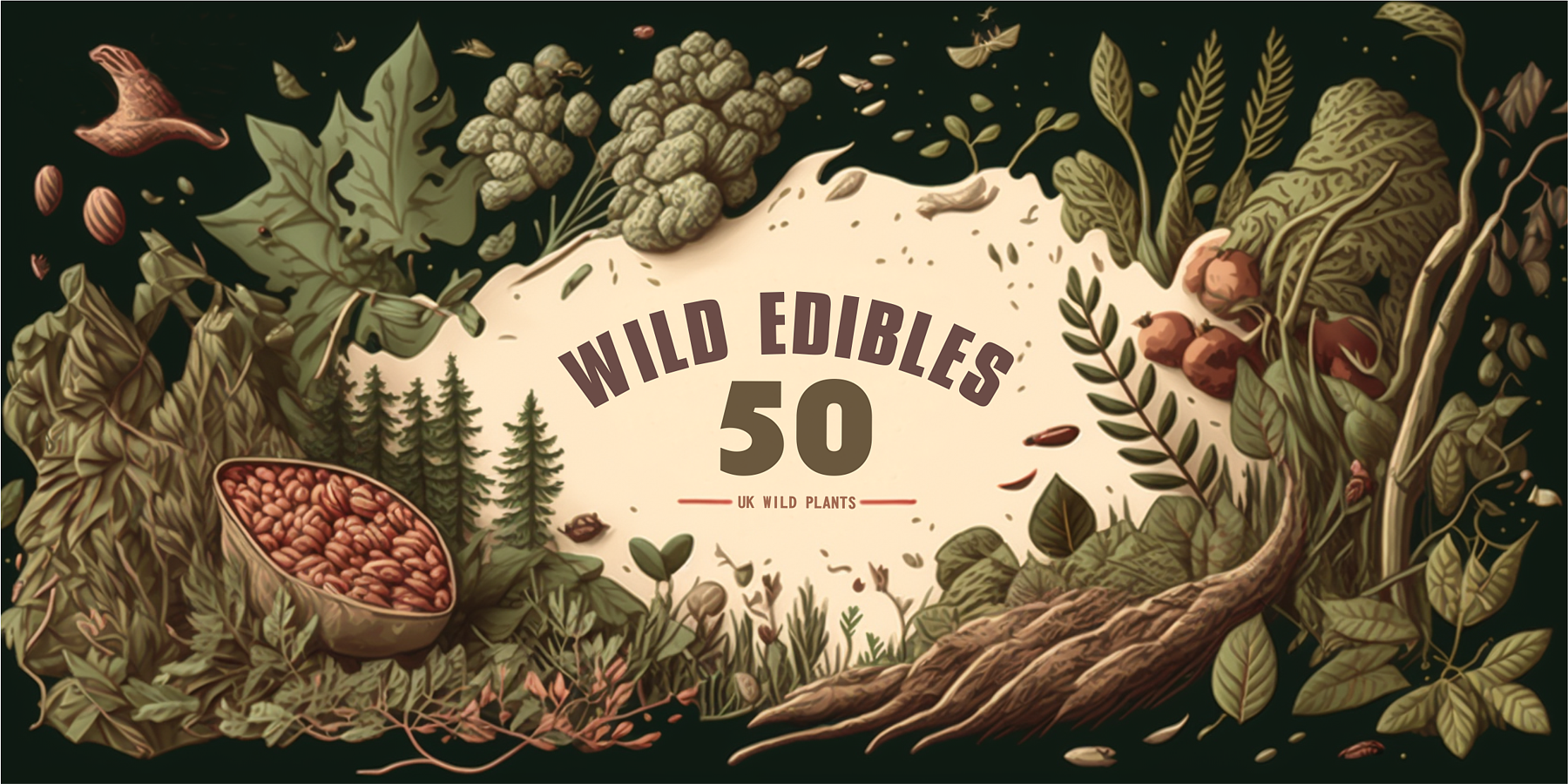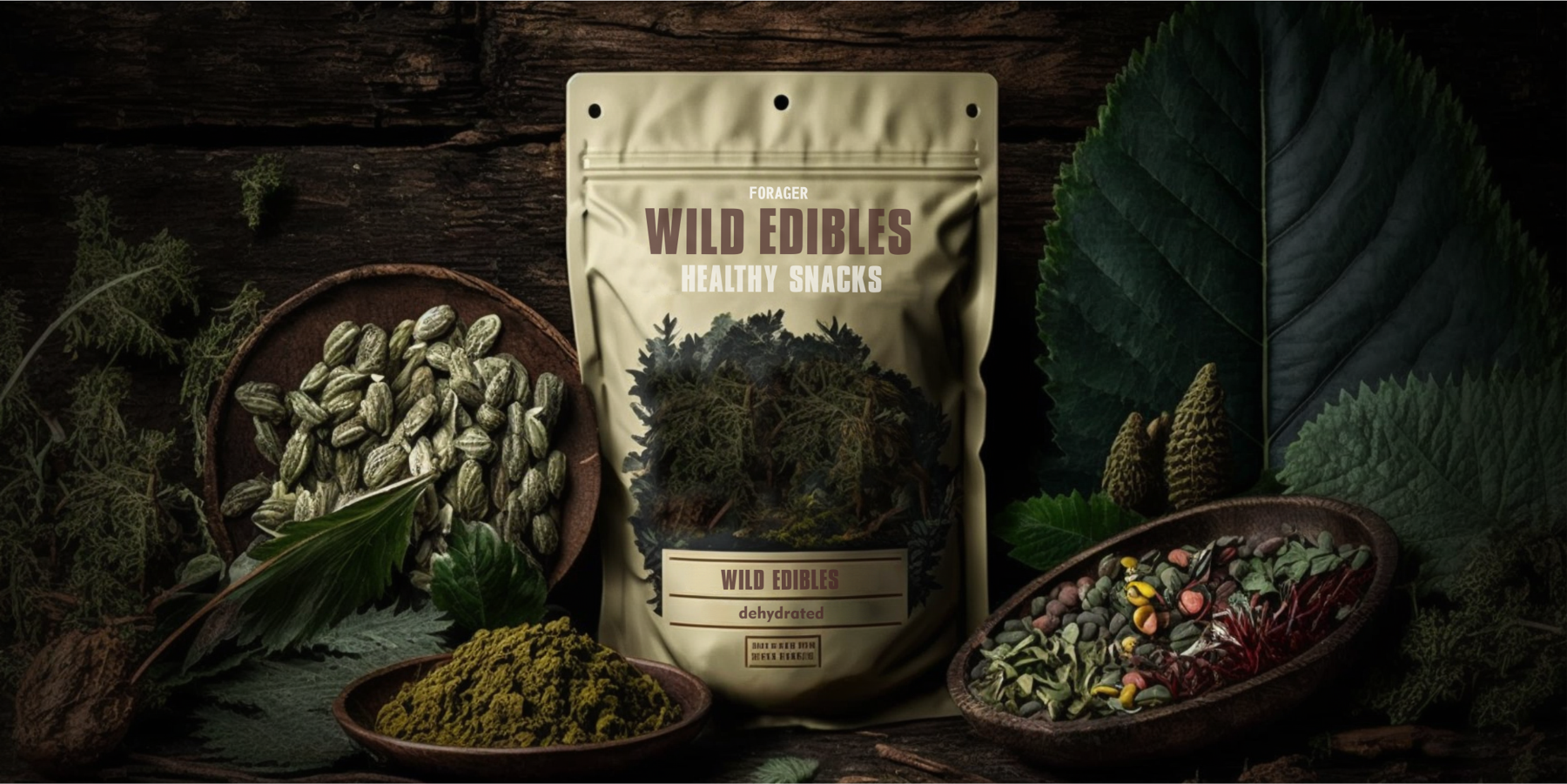
Foraging for Food - A Useful Guide
Foraging for Food - A Useful Guide
As a survivalist, one of the most important skills you can have is the ability to identify edible plants in the wild. In the UK, there are over 200 edible wild plants, including dandelion, nettle, wild garlic, and elderberry, according to a study published in the Journal of Ethnobiology and Ethnomedicine. These plants can be a valuable source of nutrition and sustenance in a survival situation, but it's important to know how to identify them correctly and safely.
Foraging for wild food has become increasingly popular in the UK in recent years. A survey conducted by the Royal Society for the Protection of Birds found that over 60% of people in the UK have foraged for wild food at least once, and over 10% do so on a regular basis. This trend reflects a global reliance on traditional medicine derived from wild plants, estimated by the Food and Agriculture Organization of the United Nations to be used by around 80% of the world's population.
However, in the UK, it's important to be aware of regulations related to foraging. The Wildlife and Countryside Act 1981 prohibits the uprooting of any wild plant without the landowner's permission, and certain protected species cannot be picked or foraged. It's also important to forage in a safe and responsible manner, taking only what you need and leaving enough for the plant to continue to grow and reproduce.
To identify edible plants in the wild, start by familiarizing yourself with common edible plants in your region. The Woodland Trust offers a useful guide to identifying edible plants in the UK, including information on when and where to find them, how to prepare them, and any potential risks or side effects. Learn to identify plants accurately by looking at the plant's leaves, stem, flowers, and fruits. Use a field guide or smartphone app to help you with identification.
It's important to know when to pick edible plants. Some plants are only edible at certain times of the year or during certain stages of growth. For example, some plants may only be edible when the leaves are young and tender. The British Red Cross offers courses on foraging for wild food, including information on how to identify edible plants and how to prepare them safely.
Be cautious of poisonous lookalikes, as some poisonous plants can look similar to edible plants. Learn to identify the differences between the two, and test a small amount of a new plant before consuming it to ensure you don't have an allergic reaction or other negative side effects.
Finally, it's important to prepare the plant properly before consuming it. Some plants may require special preparation to be safe to eat. For example, some plants may need to be cooked to remove toxins or to improve digestibility. Be sure to research how to prepare a plant before consuming it, and always respect the environment by foraging responsibly.
For a list of the some of the most abundant edible wild plants, we suggest you visit Edible Wild Plants: 50 of the the most common UK species.
Here is a list of recommended books about foraging for food in the UK that should be an essential resource:
-
"The Forager Handbook" by Miles Irving - This comprehensive guide covers over 400 wild foods and includes detailed information on how to identify, prepare, and cook each one.
-
"The Hedgerow Handbook: Recipes, Remedies and Rituals" by Adele Nozedar - This book explores the traditional uses of hedgerow plants in the UK, including how to identify them and how to use them for food, medicine, and beauty products.
-
"Food for Free" by Richard Mabey - This classic guide to foraging in the UK covers over 240 edible plants, along with tips on where to find them and how to prepare them.
-
"The Complete Guide to Edible Wild Plants, Mushrooms, Fruits, and Nuts: Finding, Identifying, and Cooking" by Katie Letcher Lyle - This guide covers over 1,000 species of wild food, including plants, mushrooms, fruits, and nuts. It includes information on how to identify, prepare, and cook each one.
-
"Wild Food: A Complete Guide for Foragers" by Roger Phillips - This guide covers over 400 wild foods in the UK and includes over 350 recipes for cooking with them.
-
"Edible Wild Plants: A North American Field Guide" by Thomas Elias and Peter Dykeman - While this book focuses on wild plants in North America, it is still a valuable resource for identifying and using wild plants in the UK.
These books can be a great resource for anyone interested in foraging for food in the UK. Remember, it's important to forage in a safe and responsible manner, and to respect the environment by taking only what you need and leaving enough for the plant to continue to grow and reproduce.
In addition here are some recommended apps that can help with foraging for wild food in the UK:
-
PlantNet - This app allows users to identify plants by taking a photo of them. It covers over 20,000 species of plants and can be a valuable tool for identifying wild food in the UK.
-
iNaturalist - This app allows users to upload photos of plants, animals, and other wildlife, and receive help with identification from a community of experts. It can be a helpful tool for identifying wild plants and for learning more about the natural environment in the UK.
-
Wild Edibles - This app provides information on over 200 edible wild plants in the UK and includes photos, descriptions, and recipes for each one.
-
Riverford - This app provides information on seasonal fruits and vegetables, including wild produce, and offers recipes for cooking with them. It also includes tips on where to find wild food in the UK.
-
Eatweeds - This app provides information on over 140 wild edible plants in the UK and includes photos, descriptions, and recipes for each one. It also includes tips on where to find wild food and how to prepare it safely.
-
GROW Observatory - This app allows users to learn about growing food and how to identify plants in their area. It includes information on wild plants and can be a helpful tool for foraging in the UK.
Finally, for further resources we suggest you might like to visit one of the following websites:
- How to Get Your Family Started With Foraging: A Complete Guide (DIYgardening.co.uk)
- Is foraging legal in the UK? Know the law (britishlocalfood.com)
Suggested Articles
Edible Wild Plants: 50 of the the most common UK species
Foraging for wild plants should only be done if you have a good understanding of the plants, as some may have poisono...
A Guide to Coastal Foraging in the UK: Edible Seaweeds, Shellfish, and Plants
Coastal foraging is an activity that combines the pleasure of being outdoors with the satisfaction of gathering your ...
Foraging for the Future: Incorporating Wild Edibles into Your Emergency Food Supply
When thinking about emergency food supplies, our minds often turn to canned goods, freeze-dried meals, and other stor...




